This story from the Australian Aviation archives is from August 2011, when Owen Zupp took the Alpha 160A on a flight test.

There was a time when all basic trainers were capable of aerobatic manoeuvres.
But just as the philosophy of basic flight training has drifted away from more advanced manoeuvring, so too have the aircraft. However, today the Alpha 160 flies against the trend in being able to initiate a new generation of pilots in the skill of aerobatics.
A Kiwi with a french accent
If the Alpha 160 looks a lot like a Robin, that’s because it is.
Formed in France in the late 1950s by Pierre Robin and Jodel designer Jean Delemontez, “Avions Robin” built a range of tricycle monoplanes, including the HR 200 and aerobatic R2000 that boasted stylish lines and wonderful visibility through the sliding bubble canopy.
In 2004 the Robin line was purchased by New Zealand’s Alpha Aviation, and new HR 200 based Alpha 120 and R 2160 based Alpha 160 trainers began to roll off the production line at Hamilton Airport.
Unfortunately, all was not well behind the scenes, and in 2008 the New Zealand-based (but Australian-owned) company went into liquidation after around 20 aircraft had been built. The assets were subsequently sold off, with the new owner planning to restart production, and the world is now waiting to see if new life can be breathed into the Alpha.
It is a shame that its future is unclear, as there is no question that the Alpha 160 is a sound aeroplane, capable of filling a critical piece in the greater puzzle of flight training.
Purpose Built
Approaching the scarlet Alpha 160A on the apron at Bankstown Airport, it is an immediate attention-grabber. Not merely for the Maltese crosses and the words “Red Baron” emblazoned upon her flanks, but for the overall look of the aeroplane’s form. Much can be ascertained about an aeroplane from the first glance, and numerous features scream out that the Alpha is built for aerobatics.
Firstly, sitting upon its fixed tricycle undercarriage, the little aeroplane looks strong and indeed it is, certified to withstand 6 positive and 3 negative Gs as a part of its aerobatic envelope. While a MTOW of 900kg applies to normal operations, this is reduced to 800kg for aerobatics.
The bubble canopy offers a tremendous outlook, while the rudder is substantial and accounts for a fair proportion of the Alpha’s 7.1m length and all of its 2.2m of height. Such a rudder is obviously designed to offer significant authority through a full range of flight manoeuvres, rather than merely providing balance in the turn.
The 8.3m wing span is relatively stubby, and with an aspect ratio of only about 5:1 suggests a higher rate of roll than longer winged trainers. This roll rate is further aided by the slotted ailerons that account for nearly half of each wing’s span and with the ability to deflect up 20 degrees and 15 degrees on the downside.
Continuing to move around the aircraft, its design is relatively simple with a central, solitary drain beneath the fuselage to check the quality of the 160 litres of fuel contained in a single tank located aft of the cockpit. This is 40 litres more fuel than the comparable Robin R2160 and makes the Alpha very viable as a navigation trainer, burning 35 litres an hour and offering a true airspeed of around 120kt. This performance is achieved by a Lycoming O-320-D2A engine which is rated at 160hp (119kW) and driving a two bladed fixed pitch propeller.
As always, the external inspection calls for particular attention to joins, cables, pushrods and hinges, and this is even more the case on an aircraft designed to go that little bit harder. An especially significant place to monitor is the rudder mounts on the trailing edge of the fin, and these are best observed by carefully pushing the rudder while simultaneously lifting the elevator. These brackets have the potential to fatigue, especially if the aircraft is mishandled in a tail-slide and the rudder is allowed to slam against the stops under load. While at the back end of the aeroplane, a thorough inspection of the rudder and its associated ventral fin is worthwhile too, as clearance is minimal and the area can be prone to tail strike if incorrect technique is used on takeoff or landing.
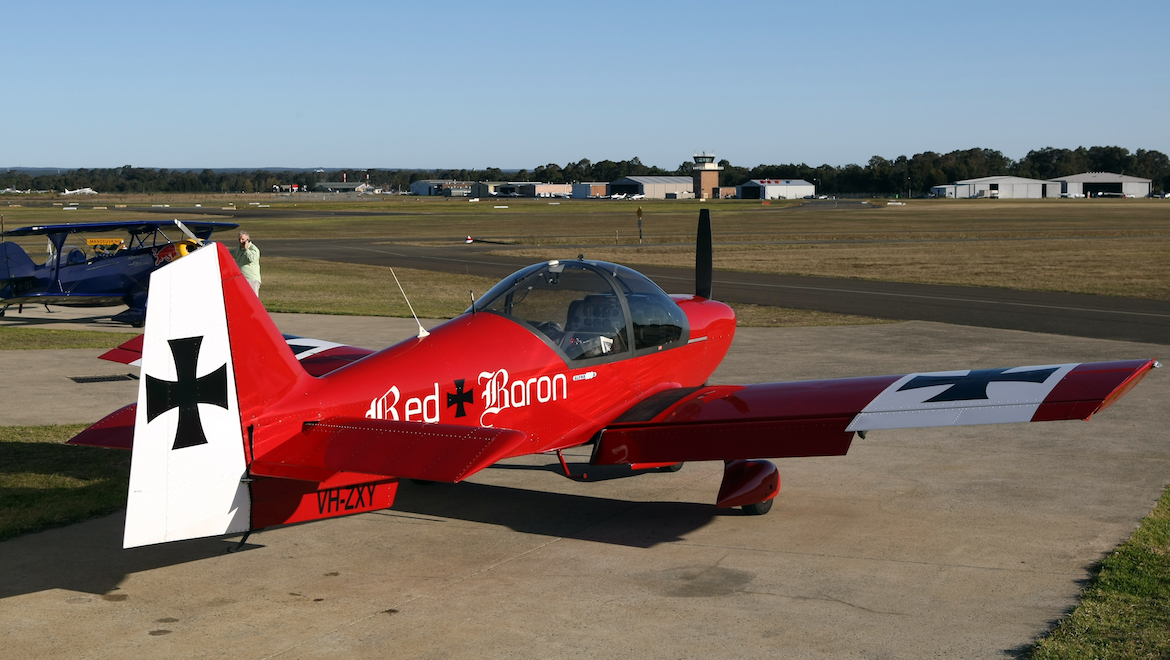
Access to the cockpit is via a step at the wing’s trailing edge and onto a non-slip walkway at the root. With the jettisonable canopy slid forward over the cowling, entry is easily achieved by simply stepping down into the cockpit. One is immediately at ease with everything at the fingertips, but there is enough room between the occupants in the 1.1 metre wide cabin. The seats are adjustable fore and aft and equipped with a secure four-point harness. Behind the seats is a small shelf that can serve to hold a couple of soft sports bags when touring, but is obviously best kept clear when aerobatics are planned.
Between the seats the centre console is home to a guarded fuel shutoff valve, trim wheel, master switch, carburettor heat selector, mixture control and key start ignition switch. The mixture and carburettor heat are relatively close to each other, so there’s an extra incentive to “confirm before selection”. Noticeably there is a G-Meter, but no attitude indicator to be found, reinforcing that visual flight is all about setting the attitude outside the windscreen. Otherwise, the instrument panel is fairly conventional with flight instruments on the left and avionics, circuit breakers and engine gauges to the right and along the lower lip of the panel. The tachometer is set to the far right of the panel and opens up a reasonable degree of parallax when setting power. A glareshield at the top of the panel houses a series of warning lights and ancillary switches such as external lighting.
Power is controlled by one of two flight panel mounted throttles located to each pilot’s left, while the control column or “stick” is central to each seat, extending from beneath the instrument panel. Each control stick is fitted with a pistol grip and topped with a push-to-talk switch. While not as conventional as a floor mounted control column, it provides a very comfortable seating position in conjunction with the panel mounted throttle.
Without further ado, we prime the Lycoming engine and rotate and push the key to start, which is slightly different to the Robin which has a separate start button. The Alpha bursts into life and we taxi off with clear blue skies above.
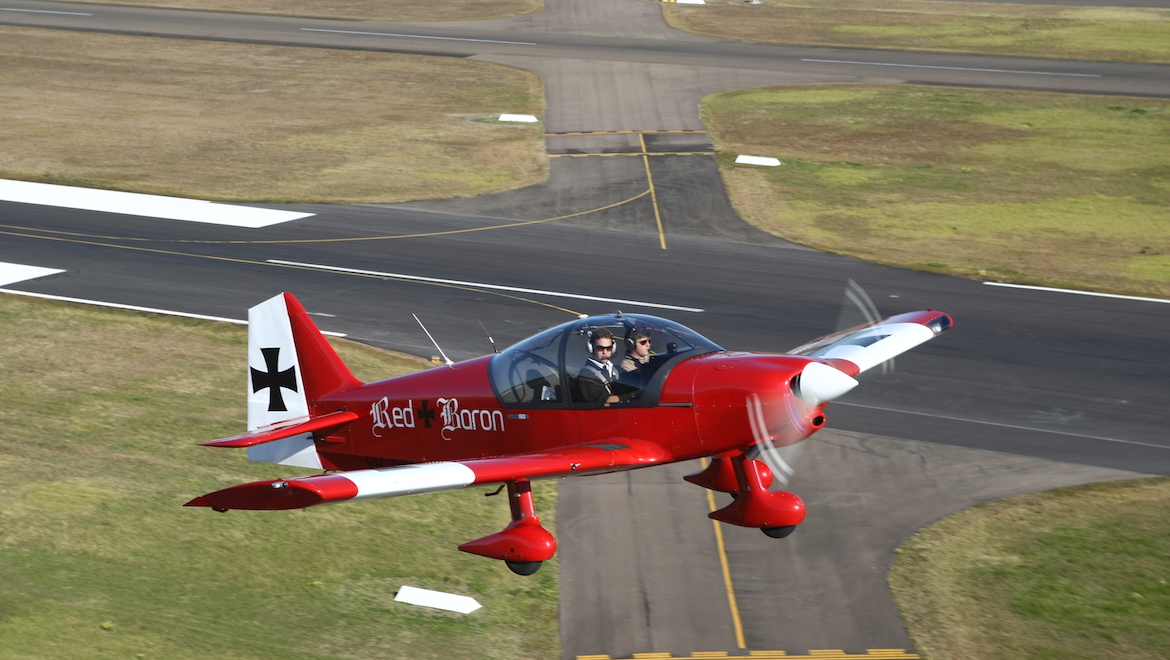
Over the Top
On the ground the Alpha is easily controlled by a directly linked nosewheel, although it is also designed to disconnect when in flight once the weight is off the wheels. A cautionary note – if taxiing with the stick held back, should the weight move towards the tail for any reason, nosewheel steering may be interrupted. The easiest way to rectify this is by touching the brakes, but it’s best to be forewarned.
With checks completed, 10 degrees of flap set and cleared for takeoff, the Alpha accelerates promptly, and passing 55kt the aircraft hints at flying and rotation is initiated at 65kt after around 300m ground roll. The nose up limit of the rotation is when the spinner appears to touch the horizon – any higher and there is a danger of striking the tail’s ventral fin. At this attitude the aircraft accelerates well, and through 75kt the takeoff flap is retracted and a climb speed of 80kt initiated.
Initially levelling out at 2500ft, it is evident that the trim is very effective and only a touch is needed to adjust from climb to cruise. In straight and level the aircraft is an absolute dream to fly – smooth and stable without the sensitivity generally associated with aerobatic aeroplanes. Cruising along at 120kt, this aircraft can genuinely claim to be a comfortable touring machine with the fun option of aerobatics. And climbing up to 4000ft it is certainly time for some fun.
Starting off with some conventional “power off” stalls, the aircraft displays copybook symptoms and buffet at around 50kt, with very little tendency to drop a wing as long as the controls are centralised. Pulling back further on the stick and holding the aeroplane deeply in the stall, alternating rudder inputs establishes the Alpha in a standard “falling leaf” manoeuvre. It takes about two oscillations before the aeroplane develops its own momentum, but once in the groove it comfortably swings from 60 degrees angle of bank from side to side as the height washes away. Relaxing the controls, the aeroplane effectively recovers itself.
Climbing back up to altitude, the Alpha wastes no time and next we are ready for some basic aerobatics. The loop is entered at 135kt and calls for a brief dive to accumulate the energy and airspeed before a 4G pull up to enter the loop. The biggest challenge is not exceeding the engine’s red line of 2700rpm in the dive. This is achieved by retarding the throttle slightly, but you must also remember to restore the power on pitching up or you’ll run “out of puff” at the top of the loop. The parallax on the tachometer makes the task challenging, so it is best to learn the throttle position by feel and cue the changes in power based on the indicated airspeed.
The rest of the loop is fairly copybook with only a hint of rudder required to keep the balance ball centred in the low airspeed sections of the loop. Coming over the top, the bubble canopy offers a great view of the approaching horizon as the neck is craned back. On the downhill run the Alpha gathers speed quickly, and levelling off leaves the aircraft with enough airspeed to enter another manoeuvre, such as an aileron roll.
Entering the aileron roll at 110kt is achieved by a 2.5G pull up, checking slightly forward and then full roll input. Those stubby wings and big ailerons make the Alpha an absolute joy to roll around the horizon and recovery is equally effortless. Similarly wing-overs, stall turns, steep turns and lazy eights are much more about smooth coordination than sweat in this aeroplane. It is truly a simple joy to fly.
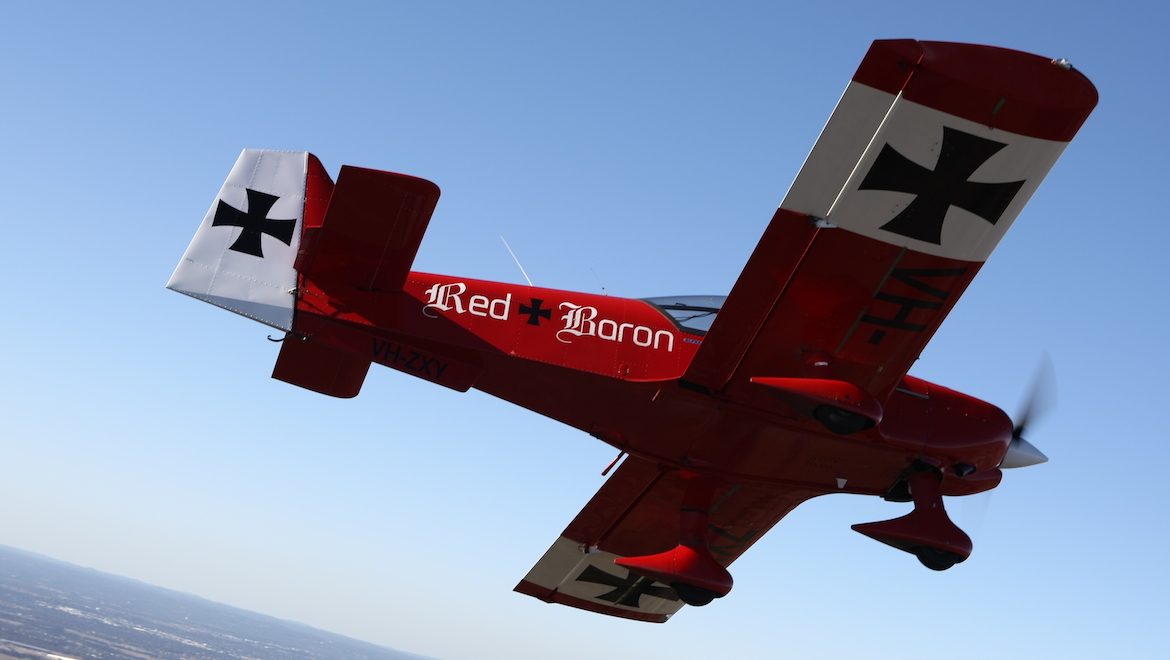
While not approved for more than 20 seconds of inverted flight, the Alpha 160A is an accomplished aircraft when it comes to spinning. The spin is entered from power-off level flight and as the stall approaches, at around 55kt, full back stick is applied with neutral ailerons and simultaneous application of rudder in the direction of desired rotation. Each revolution costs around 250ft and the subsequent conventional recovery of full opposite rudder consumes about another 1300ft.
A three revolution spin will take about three-quarters of a revolution to recover. More than three revolutions and the engine may well stall, but a windmill restart is no drama for the Alpha. However, should the Lycoming not fire up for some reason, the Alpha glides comfortably at 80kt and offers around 10km range from 4000ft. Further aiding the forced landing scenario, the substantial rudder makes the Alpha a very effective aircraft to sideslip. It will call for some significant rudder force, but the rate of descent increase is substantial and virtually instantaneous.
With the twists and turns completed, we return to the circuit and fly some relatively mundane circuits. And this is a good thing. The Alpha possesses a great lookout in the circuit area, and with the ability to clip along at 120kt or dawdle along at 75kt with a stage of flap extended offers a tremendous ability to conform to the pattern spacing. The first stage of flap can be extended at 97kt to sit at 85kt on base with the power set at 1500rpm. On final, 35 degrees of flap is extended with a target speed of 75kt, bleeding back to 70 over the threshold. With these speeds, a landing distance over a 50ft obstacle equates to about 450m in still wind, including around 230m of ground roll. For short field landings, aim to be over the threshold at 65kt and bleed a few further knots off in the flare.
The Alpha is a very simple aircraft in the circuit, with perhaps the only challenge occurring in the final moments of the landing. As on the takeoff, the aft ventral fin is susceptible to over-rotation and risks striking the ground. Once again, the nose should be raised no higher than when the spinner appears to touch the horizon to ensure the correct touchdown attitude is achieved. The normal touchdown attitude is well below this, and the Alpha is flown into the flare and “checked” rather than arriving with a grand pull back to raise the nose. If the flare is too high, you can’t escape with the poor technique of continuing to pull back and waiting for the earth to arrive as one sometimes witnesses. If this occurs, either hold the correct attitude and arrest the descent with power, or even better, go around and give it another shot. Don’t get me wrong, this aircraft is simple to land – it just calls for correct technique.
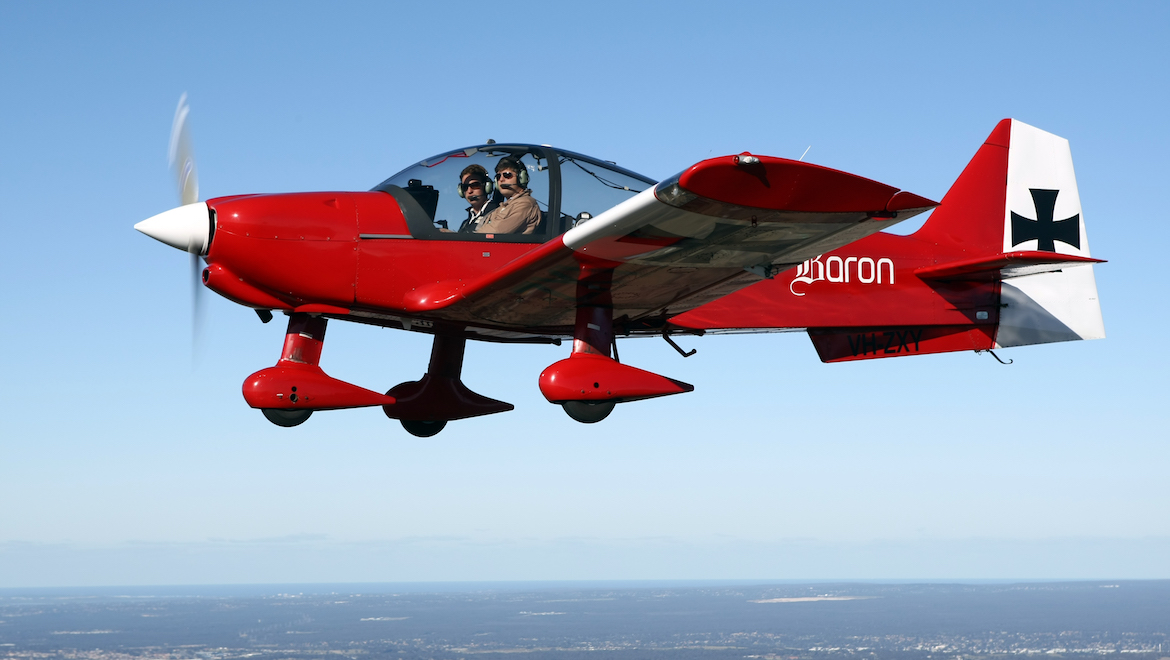
Best of Both Worlds
Clear of the runway and taxiing back to the apron, we slide the canopy forward to allow the fresh air to fill the cockpit. It is an appropriate way to conclude an exhilarating flight and feels like driving home in a sports car with the top down. The Alpha 160 is a versatile aeroplane without having to give in to compromise. While it is a stable aeroplane for those wanting to stretch its legs cross country, it has enough spring in its step to offer a genuine aerobatic platform for training or for those wishing to fly beyond the standard envelope without entering the extreme G-forces and snapping precision of the top end aerobatic machines.
Simply put, whether seeking to fly straight and level or watch the world waltz around the windshield, the Alpha 160 offers the best of both worlds.
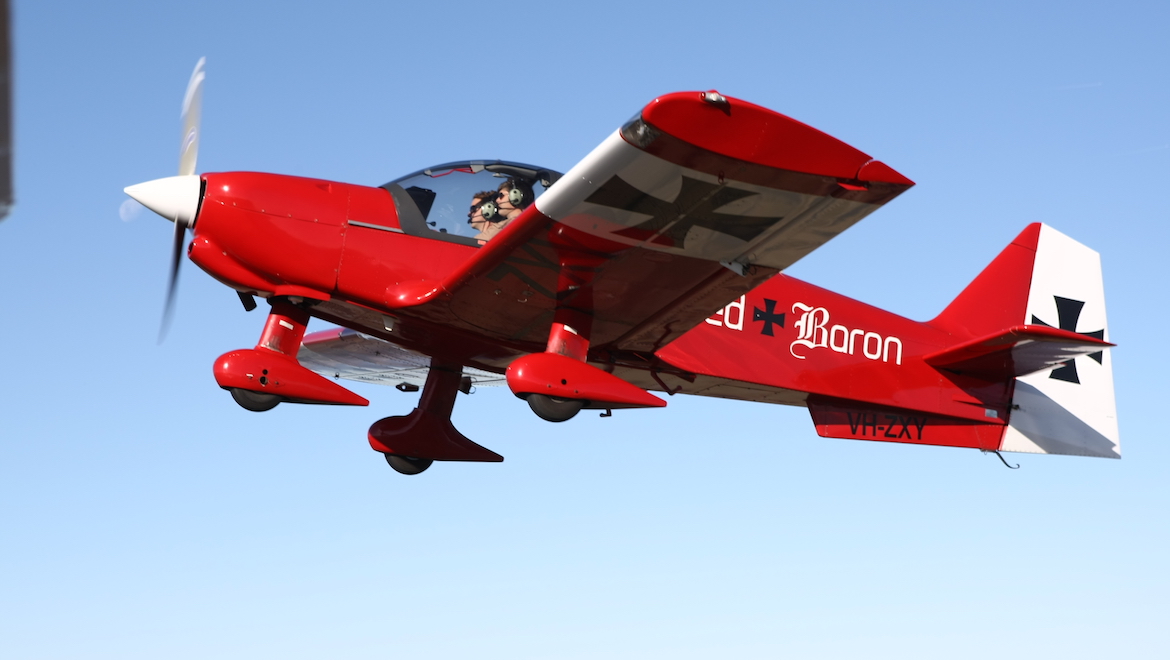
This story first appeared in the August 2011 edition of Australian Aviation. To read more stories like this, subscribe here.












